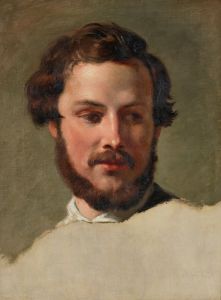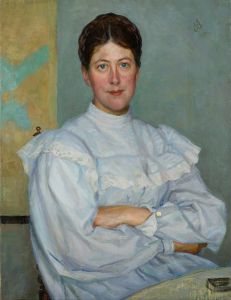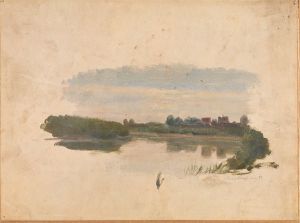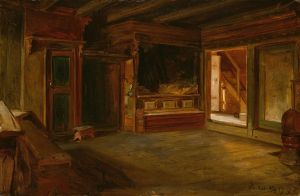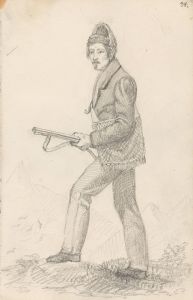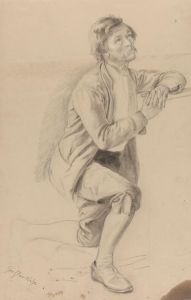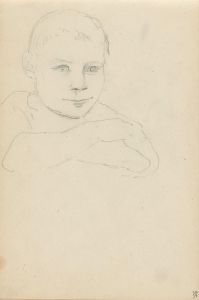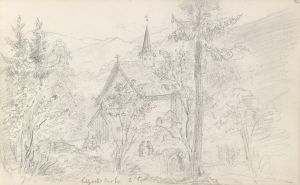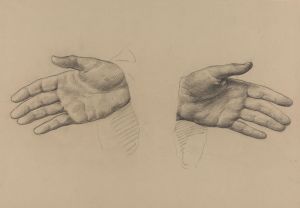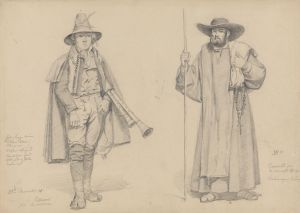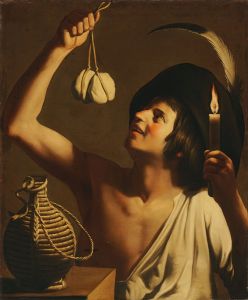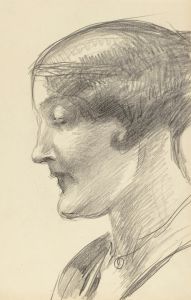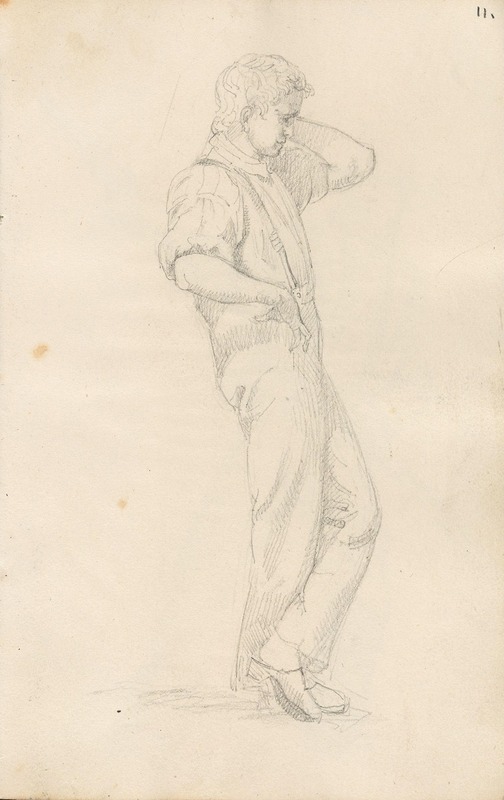
Ung mann
A hand-painted replica of Adolph Tidemand’s masterpiece Ung mann, meticulously crafted by professional artists to capture the true essence of the original. Each piece is created with museum-quality canvas and rare mineral pigments, carefully painted by experienced artists with delicate brushstrokes and rich, layered colors to perfectly recreate the texture of the original artwork. Unlike machine-printed reproductions, this hand-painted version brings the painting to life, infused with the artist’s emotions and skill in every stroke. Whether for personal collection or home decoration, it instantly elevates the artistic atmosphere of any space.
Adolph Tidemand was a prominent Norwegian painter known for his detailed and realistic depictions of Norwegian folk life and traditions. One of his works, "Ung mann" (translated as "Young Man"), reflects his interest in capturing the essence of Norwegian culture and the everyday life of its people. While specific details about this particular painting are limited, Tidemand's broader body of work provides context for understanding his artistic style and thematic focus.
Adolph Tidemand was born on August 14, 1814, in Mandal, Norway. He studied art in Copenhagen and later in Düsseldorf, Germany, which was a significant center for art education at the time. The Düsseldorf School of Painting, where Tidemand honed his skills, was known for its emphasis on detailed realism and historical accuracy, elements that became hallmarks of Tidemand's work.
Throughout his career, Tidemand was deeply interested in Norwegian history and culture. He traveled extensively throughout Norway, sketching and gathering material that would inform his paintings. His works often depicted rural life, traditional costumes, and the customs of Norwegian people, capturing the spirit of the nation during a time of growing national consciousness.
While "Ung mann" itself may not have extensive documentation, it can be assumed that the painting aligns with Tidemand's typical focus on realism and cultural representation. His paintings often feature individuals in traditional Norwegian attire, set against the backdrop of the country's picturesque landscapes. Tidemand's attention to detail and his ability to convey the character and dignity of his subjects made his work highly regarded both in Norway and internationally.
Tidemand's most famous collaboration was with Hans Gude, another notable Norwegian painter. Together, they created "Bridal Procession on the Hardangerfjord," a masterpiece that combines Tidemand's skill in figure painting with Gude's landscape expertise. This collaboration exemplifies the way Tidemand's work often celebrated Norwegian identity and the natural beauty of the country.
Adolph Tidemand's influence extended beyond his paintings. He played a significant role in the development of Norwegian national romanticism in art, a movement that sought to express the unique cultural identity of Norway. His works were instrumental in fostering a sense of pride and appreciation for Norwegian heritage during a period when the country was seeking to assert its independence and cultural distinctiveness.
In summary, while specific information about "Ung mann" is limited, understanding Adolph Tidemand's broader artistic contributions provides insight into the painting's likely themes and significance. Tidemand's dedication to portraying Norwegian life with authenticity and respect has left a lasting legacy in the art world, making him one of Norway's most celebrated artists. His works continue to be appreciated for their historical value and their role in shaping Norwegian cultural identity.





